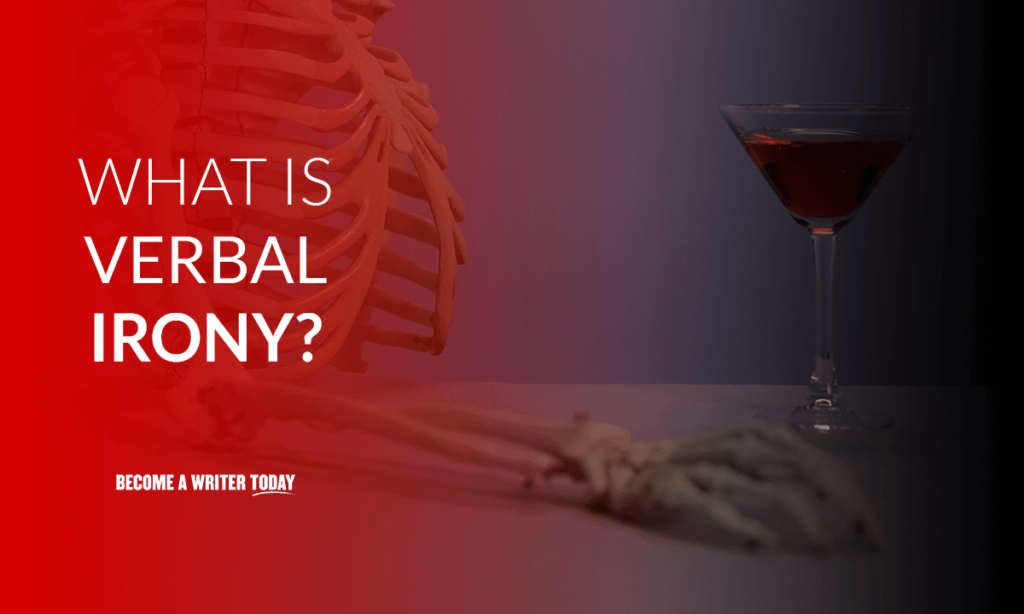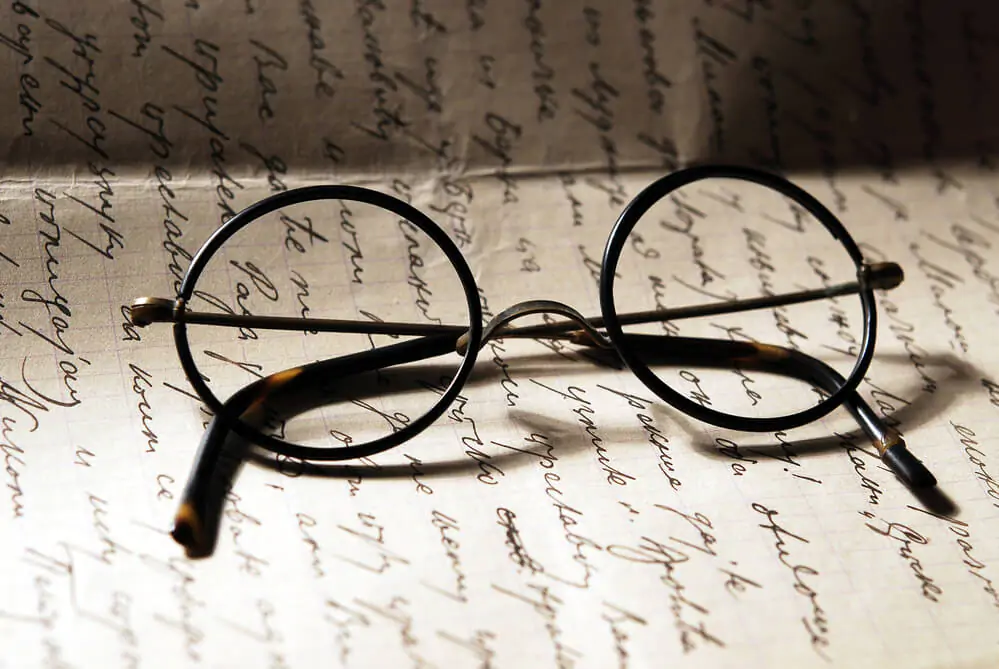Are you curious about what is verbal irony? Learn more about how this English literary device can impact a piece!
There are numerous types of irony, including situational irony, dramatic irony, and verbal irony. All of them can have a significant impact on a literary work. So, what is verbal irony? A definition of verbal irony is that this is a figure of speech. In this situation, the speaker intends to be understood even if he or she uses words that contrast with the literal meaning of what comes out of his or her mouth.
There are numerous types of irony, and all of them can change the way a literary work reads.
Contents
- Understand Different Types of Irony
- Examples of Verbal Irony from Literature and Movies
- 1. Beauty and the Beast, Disney
- 2. Dr Strangelove, Stanley Kubrick
- 3. Pride and Prejudice, Jane Austen
- 4. Harry Potter and the Order of the Phoenix, J.K. Rowling
- 5. Lemony Snicket: The Unauthorized Biography
- 6. Annie
- 7. Julius Caesar, William Shakespeare
- 8. Lord of the Flies, William Golding
- 9. Catch 22 by Joseph Heller
- What Is Verbal Irony? The Final Word
- FAQs About Verbal Irony
Understand Different Types of Irony

Before taking a look at examples of verbal irony, it is important to understand the difference between the different types of irony. In general, irony means there should be an incongruity between the words on the page and the intended meaning of those words. Irony can fall into three different major categories. They include:
- Dramatic Irony: This takes place when the reader knows that something is ironic in the situation, but the character does not. For example, someone may drink from a poisoned cup that the reader knows is poisoned while the character does not.
- Situational Irony: This type of irony takes place when the opposite of what’s expected occurs. For example, a character may put on a bathing suit only to find the swimming pool is closed.
- Verbal Irony: This takes place when the character says something different from what is meant by the speaker. A character might say it is cold outside when it is hot.
Now, it is time to take a look at a few examples of verbal irony.
Examples of Verbal Irony from Literature and Movies
There are several significant verbal irony examples found in the literature. Studying these will help you master this literary element and improve the quality of your work. These examples of verbal irony include:
1. Beauty and the Beast, Disney
In Beauty and the Beast, Belle says to Gaston, “I do not deserve you!” In reality, the reverse is true. Gaston does not deserve Belle, making this an instance of verbal irony. Beauty and the Beast is one of the most popular tales from Disney, and it has numerous lessons that remain relevant to this day.
2. Dr Strangelove, Stanley Kubrick
Dr. Strangelove is one of the most popular movies of all time. It is held up as a great theatrical work, and its script has stood the test of time. There is also an instance of verbal irony in this work when one character says, “Gentlemen, you cannot fight in here! This is the war room!” Of course, fighting is meant to take place in the war room.
3. Pride and Prejudice, Jane Austen
Jane Austen is one of the most popular writers of all time, and one of her best works is Pride & Prejudice. There is an instance of verbal irony in this book when Darcy says his future wife is, “tolerable, but not handsome enough to tempt me.” Of course, this ironic statement is resolved later in the book.
4. Harry Potter and the Order of the Phoenix, J.K. Rowling

The Harry Potter series is one of the most popular works of all time, and there is an instance of verbal irony in one of the later books, Harry Potter and the Order of the Phoenix. In it, Harry Potter says, “Quirrell was a great teacher,” but there was that issue of “Lord Voldemort sticking out of the back of his head.” Of course, that minor issue meant that Quirrell was not a great teacher after all.
The Lemony Snicket series is one of the most popular series among people of all ages. In The Unauthorized Biography, there is a specific instance of verbal irony. In it, Snicket says, “Today was a very cold and bitter day… as cold as a cup of hot chocolate.” Of course, hot chocolate is not cold at all. Therefore, this is a great use of verbal irony.
6. Annie
Annie is a popular work that has been turned into books, plays, and movies. There is also an instance of verbal irony and one of the first scenes. In it, the orphans tell Ms. Hannigan, “We love you,” which is an example of verbal irony because Ms. Hannigan is mean to them, so they do not actually love her at all.
7. Julius Caesar, William Shakespeare
Julius Caesar, by Shakespeare, has one of the most well-known examples of verbal irony. Marc Anthony gives a speech in the story in which he refers to Brutus as an honorable man. This is ironic because Brutus had just participated in murdering Julius Caesar, making him a dishonorable person. This is one form of verbal irony.
8. Lord of the Flies, William Golding
Lord of the Flies, by William Golding, is a popular literary work that is frequently found on numerous high school and college reading lists. It also has a major example of verbal irony. While they are stranded on the island, one of the main characters, Piggy, says that the boys act like kids. Instead, he says, they should act like grown-ups, who would have tea and discuss the situation.
This is an ironic statement because there is a war raging all around the boys during the story. Clearly, the adults are not talking about the situation or drinking tea because they are busy fighting a war.
9. Catch 22 by Joseph Heller
In Catch 22 by Joseph Heller, Heller uses verbal irony to obscure truths in the novel. At one point in the book, Yossarian throws off his friends and family members using verbal irony. He does not want to write to his family members and friends, so he tells them that if they do not hear from him, he must be dead.
He states that he is going on a dangerous mission, but that he will write “the instant I get back.” He had not written anyone since that time. He obfuscates the truth and stops writing behind the lie about the dangerous mission.
These are just a few of the many instances of verbal irony that can be found throughout books and movies. They are standard literary devices that are used to break up passages, jolt the reader, and inject a bit of personality into the scene. Common types of verbal irony also create hyperbole.
What Is Verbal Irony? The Final Word
There are numerous types of irony in literature, movies, and plays. One of the most common examples of irony is verbal irony. Verbal irony is frequently referred to as a figure of speech. Verbal irony takes place when a character says something that is the exact opposite of what will happen.
There are numerous reasons why someone may use verbal irony in their work. It can be used to make a joke, point out discrepancies in facts, and completely change the perspective on something that is happening. Some of the best-known writers in the world have used verbal irony and their works to make an important point. If you keep your eyes open, you will probably spot verbal irony in books you read and movies you watch.
Want more? Check out our list of irony examples from literature.
FAQs About Verbal Irony
How does using irony in a book impact the reader?
Irony can be used to create tension or suspense for the reader. It can also be used to draw attention to something important happening in the book. Irony can be used to stimulate strong emotions in the reader because the reader may know something that the character does not.
What Is The Difference Between Situational Irony And Verbal Irony?
Situational irony takes place when the character is getting ready for something to happen, but the opposite takes place. Verbal irony takes place when the character says something that is the opposite of what is actually happening. Both types of Irony can be used effectively in literary works.
What is the effect of verbal irony?
Verbal irony is similar to a figure of speech or sarcasm. This can help the reader learn more about the personality of the character. If a character uses verbal irony, it may indicate they have a sense of humor, quick wit, or even lie about something.